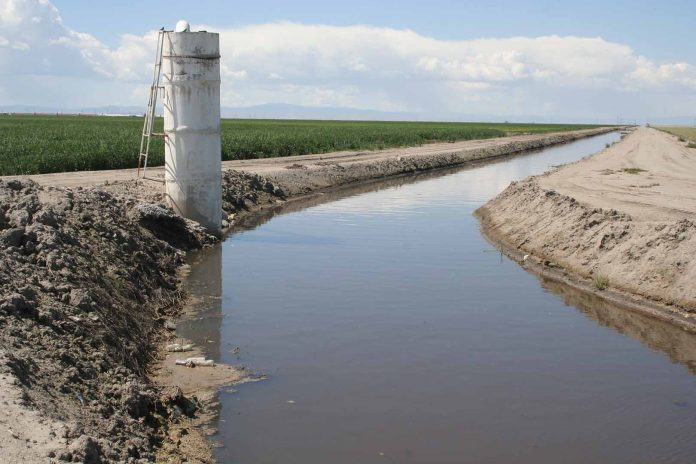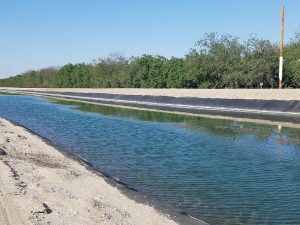
American Pistachio Growers (APG) executives have long known that a good percentage of California pistachios are grown outside of irrigation districts. But until recently, they didn’t know exactly how much.
According to a study commissioned by APG this past summer, it turns out that nearly one-fourth of California pistachio acreage, a little over 118,000 acres, are outside of irrigation districts and largely reliant on groundwater for irrigation. As such, these acres are subject to regulatory actions under the Sustainable Groundwater Management Act (SGMA), and growers in these areas are facing an uncertain future with difficult choices.
APG is using information from the study, performed by Land IQ of Sacramento, to show regulatory officials and lawmakers the potential effects of full implementation of SGMA on the pistachio industry with hopes of mitigating some of the negative impacts.
“We knew that there was a number of acres that were planted in these areas that were critically overdrafted and/or not in any water district,” said Richard Matoian, president of APG, “but we didn’t know how many acres. This work helped identify that so that we could speak a whole lot more intelligently about those acres that are potentially going to be affected by full implementation of SGMA.
“We wanted to have a better sense of how many acres that represented,” Matoian said.
To obtain the data, Land IQ Owner and Principal Scientist Joel Kimmelshue overlayed pistachio acres captured via satellite imagery and ground truthing with water supply information. Land IQ also uses an agronomic component of evaluation to gather an accurate representation of a commodity’s footprint, Kimmelshue said.
“We put together as many pieces of information as possible,” Kimmelshue said.

Threefold Increase
The growth of the California pistachio industry, well documented in recent years, shows a threefold increase over the past 15 years, with many of the newer acres planted outside of irrigation districts.
About 96% of the 460,000 bearing acres are grown in the San Joaquin Valley, according to Matoian. “There is more now being grown in Northern California, but much of that is not into bearing,” Matoian said. Overall, California has 525,000 acres of pistachios in the ground, he said.
Some difficult choices loom for growers reliant on groundwater for irrigation and those in water districts cutting back on deliveries, which primarily include state and federal water project districts, Matoian said.
“Their options are: one, they are going to have to cut back on how much water they can apply; two, they are going to have to purchase or utilize some of their existing ground and allocate the water from that other ground onto their permanent crops; or three, they are going to have to try to figure out something else that may not be a good option, such as deficit irrigating at only those critical times, purchasing more ground, which would come at a cost, or purchasing water that can be transferred if you are in an area where you can do water transfers.
“So, there are options, but these options do come at a cost. And they come with complexities surrounding them,” Matoian said.
Several Forces at Play
Concerns around water supply are being shaped by several forces, Matoian said, including water shortage issues within the Colorado River system, which is prompting Southern California water users to look north for additional water supplies, and issues with groundwater-critical resources, which prompted the passage of SGMA in 2014. Implementation of the act is now underway, and its effects are already being felt.
Earlier this year, APG approached Land IQ, which provides crop mapping for several commodity groups in California, including since 2014 for the California pistachio industry, asking for a detailed report on pistachio acreage in California and one that looked at water supply issues affecting the industry. The general concept, Kimmelshue said, is that acres in irrigation districts are more secure in their ability to access irrigation water in the future than those outside of irrigation districts. But, he said, there are variations within that concept. Some irrigation districts, he said, are better positioned than others.
“Some districts are more robust in their water supply,” Kimmelshue said. “They may have senior rights, riparian rights, and others may not. So, that is the real benefit of mapping pistachios or any crop for that matter and being able to spatially locate each individual orchard in relation to an irrigation district, or not.”
Moving Target
In the study, Land IQ used a qualitative index to determine the robustness of water supply for any given area, Kimmelshue said, where 1 is bad and 18 is perfect. “There is nothing that is perfect,” he said. “We have some areas that are scored as low as 3 or 4 and some as high as 13 or 14, and everywhere in between. And it is a moving target because of the implementation of the Groundwater Sustainability Plans as required by SGMA.”

Asked if the study unveiled any surprises, Matoian said, “No, nothing surprising. It just helps us determine the actual amount of acres that were in these water-sensitive areas.
“And that is exactly what we wanted to get from the study,” he said. “We wanted to be able to go to regulators and say that our pistachio acreage is in these areas and unless you are providing some help in the sense of providing more water, we are going to have a potential curtailment of the water that is available to the industry and the production that is going to come. And if food production is important, which we believe it is, if jobs are important, then we need to figure out how we can provide more water to these growers and more water to these communities as well.
“Many of these communities that are on the east side of the San Joaquin Valley, cities like Orange Cove, Porterville and Lindsay and others, rely upon the Friant-Kern Canal, for example, for their water supply,” he said. “They are pumping the water, treating the water and that provides their municipal water. And I know on the west side, that is the case in the city of Coalinga, which pulls water out of the California Aqueduct.”
Matoian said the study serves several purposes outside of revealing the number of acres affected by full implementation of SGMA, including helping the industry better estimate yields or crop size in any given area and showing where the industry would be best suited to grow in terms of where water supplies are most robust. “Generally speaking, it is going to be tougher to increase acres in areas in which we have critically overdrafted water basins and with full implementation of SGMA,” he said.
On the plus-side, Matoian noted, pistachios require less water than some other crops and are more salt-tolerant so can be grown on more marginal soils, facts that could help the industry better withstand water limitations.
But, he said, the bottom line is, “More water means more potential crop.”















